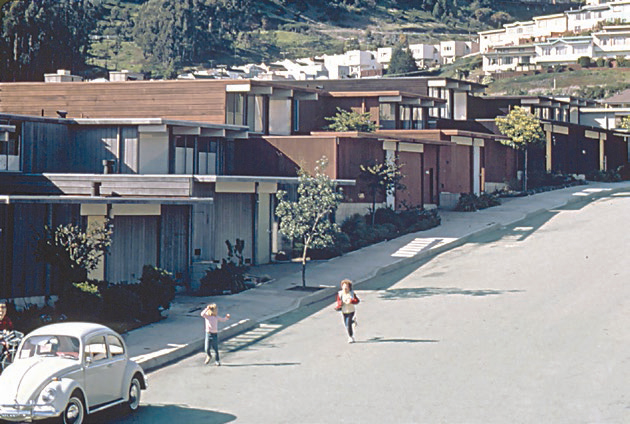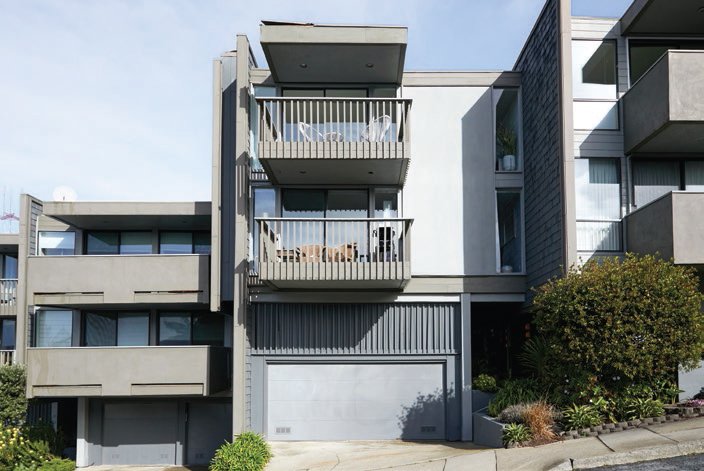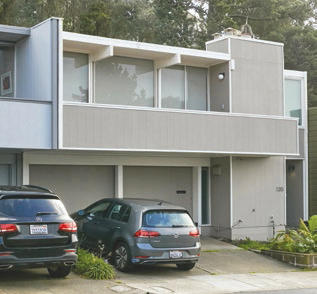Suburbia in the Sky - Page 5
 |
 |
|
|
Another puzzle, 'Houseplant Jungle,' derives from a Covid pandemic project of his: "growing poppies in my backyard." Litten's yard, originally bare concrete, is today a gardener's paradise.
"When I started looking to buy a house, I wanted a house with a yard, something that I could work on and develop over time. And this house definitely checked those boxes," he says.
Still, Litten says, "I would like there to be a stronger sense of community here."
Why the lack? Litten has theories.
"The type of topography here is different [than suburban Eichler tracts]," he says. "They don't have as much street presence as there is in suburban neighborhoods, with the front lawns."
"They don't have a front porch. They don't have a welcoming façade," he says of the homes. "So it feels a little bit like, you know, everyone is behind their cinder block walls."
He adds, "There's not really any community space other than the playground and dog walking around [nearby] Christopher Park." Rosie Rosenthal notes there is also a popular community garden where people gather.
 |
 |
And even though younger families have been moving in recently, Litten believes a shortage of kids means parents don't meet each other. "It's not a place where young families move to," he says. "It's also gotten superexpensive up here."
On the whole the Eichlers of Diamond Heights seem well preserved, at least from the street. A few windows have changed, and most garage doors. Some homes have gotten added stories, and some balconies have been turned into enclosed rooms.
Inside, though, many of the homes have been altered, Litten says. "Some are almost unrecognizable as Eichlers," he says. Some people have turned their entry courtyards into indoor rooms.
"If I know that there is an Eichler that will most likely be renovated and many of the original features will be removed, I'll try and wrangle my way in to meet whoever is going to be doing the work to see if there's anything salvageable," he says.
But Litten also sees new neighbors who treat their homes kindly. He describes neighbors who "bought the house because it was an Eichler, and they did some very sensitive renovations and kept the Eichler [style]."
"So I do know that there are aficionados in the neighborhood," he says. "I just have never had an opportunity to meet many of them."
• The Eichlers of Diamond Heights are on Amber Way (from just below Duncan Street to just before Amber's intersection with Turquoise Way). On the upper part of Amber, from Duncan to the intersection with Amethyst Way, the Eichlers are on the north side of the street only. On Amethyst, the Eichlers are on both sides of the street. Eichlers occupy all of the east side and part of the west side of Cameo Way. They are also found on Duncan Street, north of Cameo.
• Hannah Simonson's thesis 'Modern Diamond Heights: Dwell-ification and the Challenges of Preserving Modernist, Redevelopment Resources in Diamond Heights, San Francisco' is posted online at moderndiamondheights.com.
Photography: Rory Earnshaw, Dave Weinstein, Open Homes Photography; and courtesy Marsha Williams of Engel & Volkers, San Francisco Redevelopment Agency, San Francisco History Center (San Francisco Public Library)




